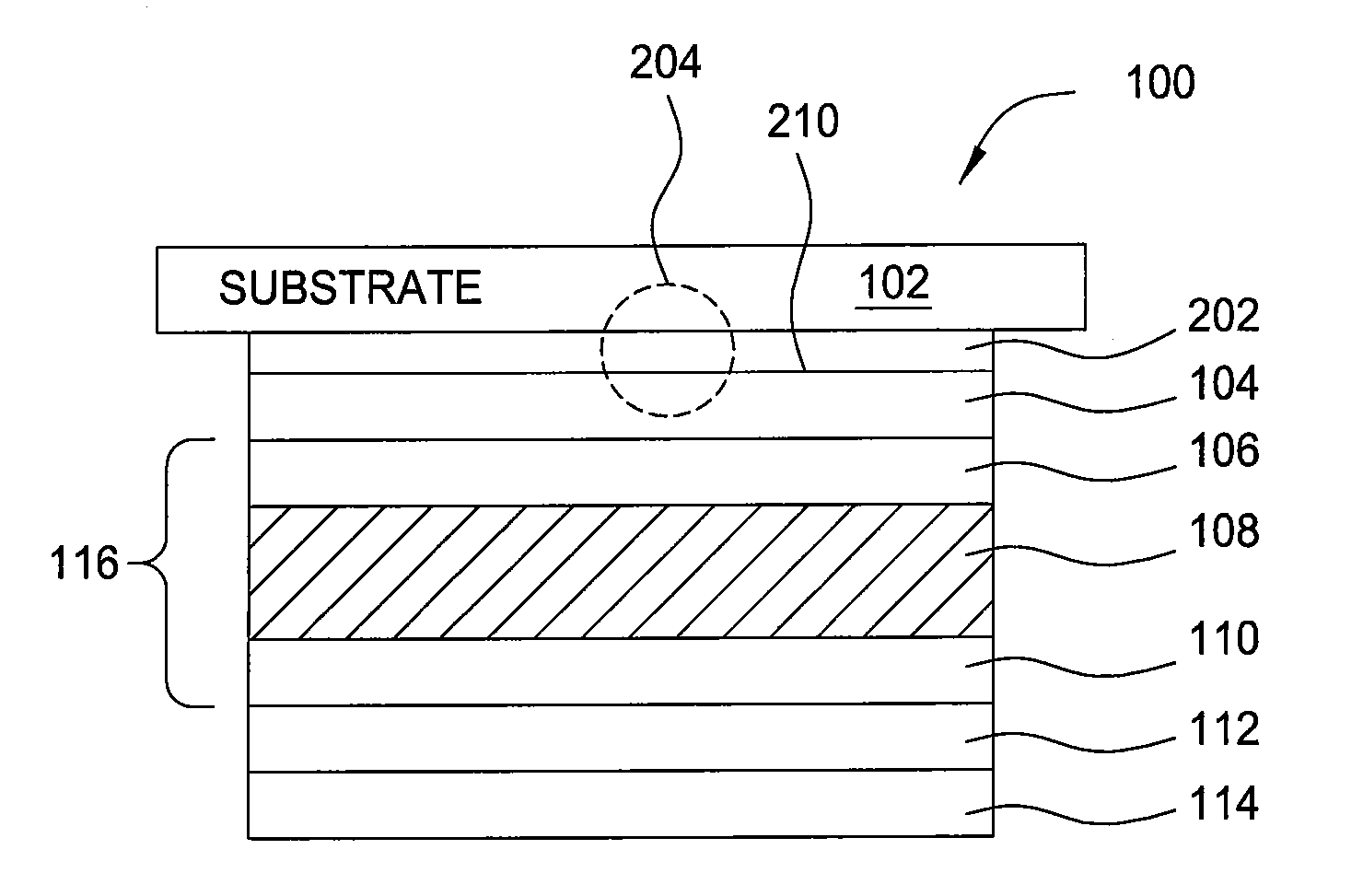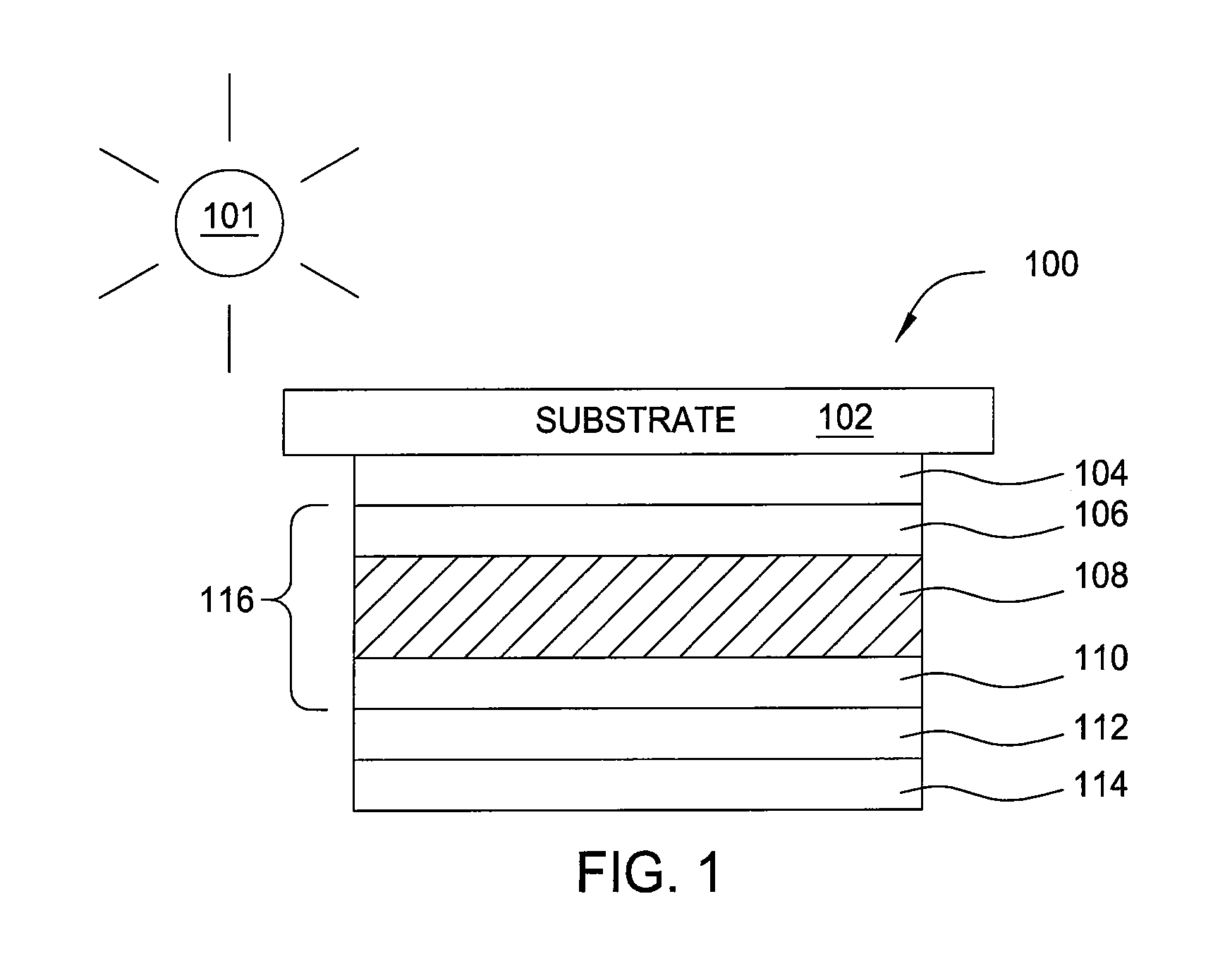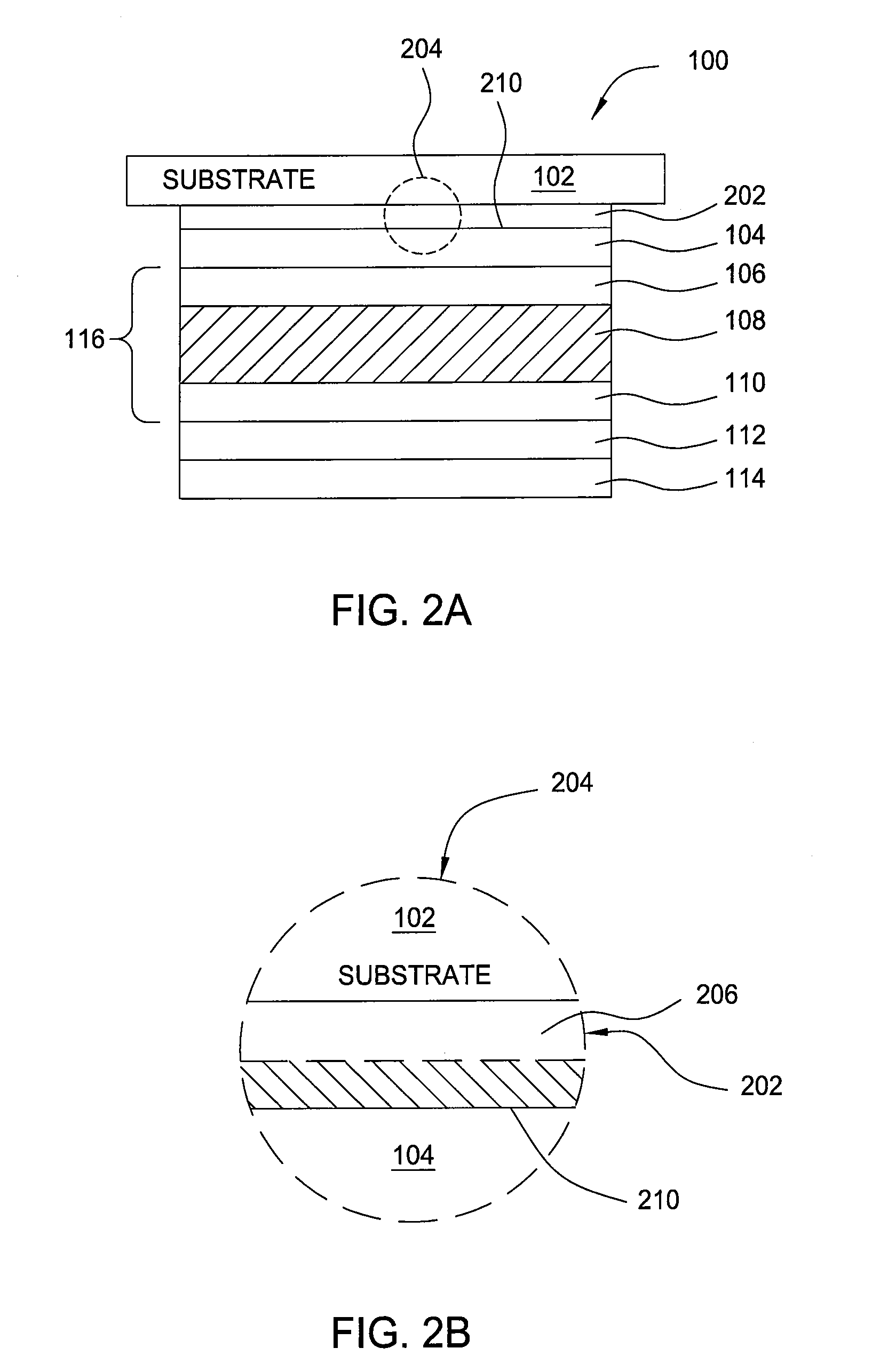Barrier layer disposed between a substrate and a transparent conductive oxide layer for thin film silicon solar cells
a barrier layer and silicon solar cell technology, applied in the field of solar cells, can solve the problems of film peeling or cracking at the interface, solar cell deformation, device stability less than desired, etc., and achieve the effect of improving the interface properties
- Summary
- Abstract
- Description
- Claims
- Application Information
AI Technical Summary
Benefits of technology
Problems solved by technology
Method used
Image
Examples
Embodiment Construction
[0021]Thin-film solar cells are generally formed from numerous types of films, or layers, put together in many different ways. Most films used in such devices incorporate a semiconductor element that may comprise silicon, germanium, carbon, boron, phosphorous, nitrogen, oxygen, hydrogen and the like. Characteristics of the different films include degrees of crystallinity, dopant type, dopant concentration, film refractive index, film extinction coefficient, film transparency, film absorption, conductivity, thickness and roughness. Most of these films can be formed by use of a chemical vapor deposition process, which may include some degree of ionization or plasma formation.
[0022]Charge generation during a photovoltaic process is generally provided by a bulk semiconductor layer, such as a silicon containing layer. The bulk layer is also sometimes called an intrinsic layer to distinguish it from the various doped layers present in the solar cell. The intrinsic layer may have any desir...
PUM
 Login to View More
Login to View More Abstract
Description
Claims
Application Information
 Login to View More
Login to View More - R&D
- Intellectual Property
- Life Sciences
- Materials
- Tech Scout
- Unparalleled Data Quality
- Higher Quality Content
- 60% Fewer Hallucinations
Browse by: Latest US Patents, China's latest patents, Technical Efficacy Thesaurus, Application Domain, Technology Topic, Popular Technical Reports.
© 2025 PatSnap. All rights reserved.Legal|Privacy policy|Modern Slavery Act Transparency Statement|Sitemap|About US| Contact US: help@patsnap.com



